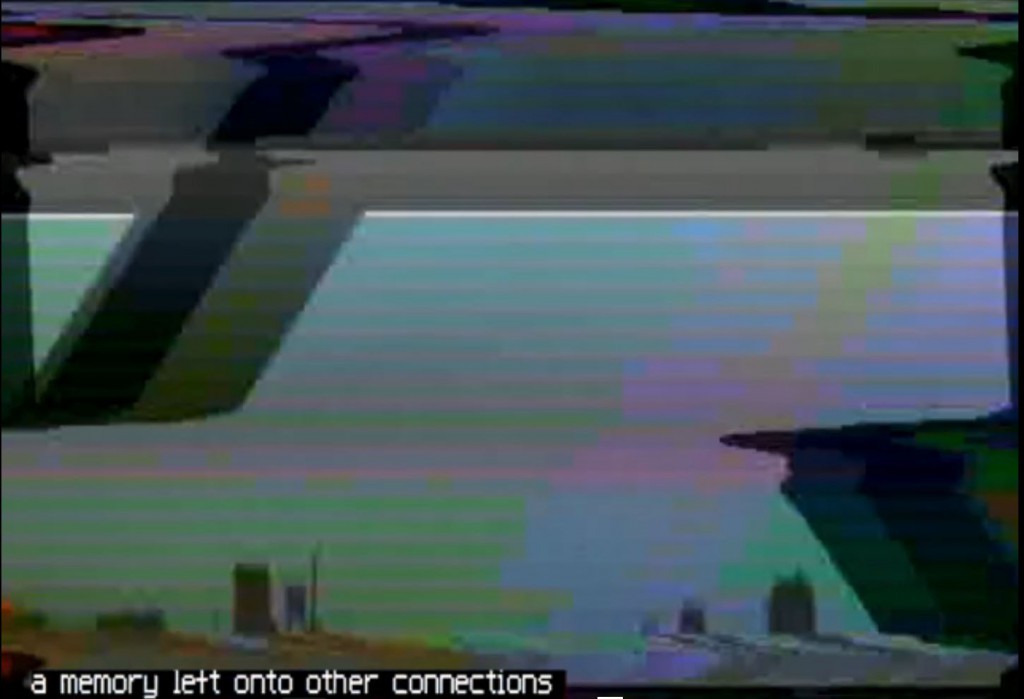
Glitch Aesthetics
Description
Week 6: September 17 – 23
While aesthetics may be inoperative here, glitch represents the mistakes, errors, artifacts and aberrations of digital processes that have in recent years found a central place in contemporary media art, particularly via the Net where emergent low-resolution glitch forms and other so-called “accidents” of artifacts are often native to the medium. We will survey some of the key artists who have pioneered the art and theory of glitch aesthetics to better understand how this “outlier” form has become an emerging genre. Current hactivist and DIY movements and their techniques will be explored to better understand how glitch is a unifying concept that brings together alternative communities of collaborating artists. This week, our visiting artist will be Rosa Menkman, the Dutch glitch theorist and artist whose writings on this emerging area have illuminated the techniques and conceptual approaches of artists who practice what we might refer to as “glitch aesthetics.” Location: Adobe Connect
Assignments
Due Next Week: (prior to our Skype meeting)
1 – Final Project Update
In advance of our Skype meeting, please write up a short summary (approx. 250 words) discussing your idea for a final project. This is not intended as a final statement, that will come in a few weeks when you write the first installment of your Project Hyperessay. I just want your thoughts even though the idea may evolve or change altogether. Please include any relevant images or video, either your own work, or a work that has particularly influenced your idea. Be sure and use “Final Project” as the category for your blog post. During our Skype meeting, your Final Project Update will be the basis for our discussion.
Due Next Week: Wednesday, September 23
2 – Micro-Project: Glitched Aberrations
Choose a Photoshop.psd image and use Text Edit to glitch it and Preview to see the results, which can you post as your Micro-Project assignment. Be sure and use the category “micro-project.”
For full details about the project:
- Micro-Project: Glitched Aberrations
It turns out that Rosa Menkman’s instructions in the Vernacular of File Formats don’t give the results they used to with the current version of Photoshop, so just do the assignment as written.
Due Three Weeks: Thursday, October 8
3 – Reading
- Dixon, S. (2007) “Webcams: The subversion of Surveillance” (pg. 443-455), Digital Performance, 2007
4 – Research Critique: Public vs Private
You will be assigned an artwork to research for a short 250 word hyperessay about the work, the artist, and how it relates specifically to the topic of the week. Incorporate the reading (see above), as relevant, into your research post, discussing how it relates contextually to the work you are critiquing. Use the Lecture Notes in the Private vs Public page of the Syllabus to prepare your research, where you will find documentation and links about each of the works.
Research Critique Assignments:
Here are additional instructions for the research critique:
- Create a new post on your blog incorporating relevant hyperlinks, images, video, etc
- Add a featured image
- Apply the “Research” category
- Apply appropriate tags
- Post a comment on at least one other research post prior to the following class
Works for review:
- Jennifer Ringley, Jennicam, (1997)
- Eva and Franco Mattes, Life Sharing, (2000)
- Hasan Elahi, Tracking Transience 2.0 (2003)
5 – Final Project Update
Following our Skype meeting, please write up a short summary (approx. 250 words) revising your idea for the final project. Base your revision on any new ideas that came up during the meeting, along with any suggestions I make for additional research. This revised version should carry the idea forward, or perhaps reflect a new idea you have. Be sure and use “Final Project” as the category for your blog post. We will discuss your ideas during our next class on October 8.
Outline
Works for study:
-
Dirk Paesmans & Joan Heemskerk, Jodi.org, (1995)
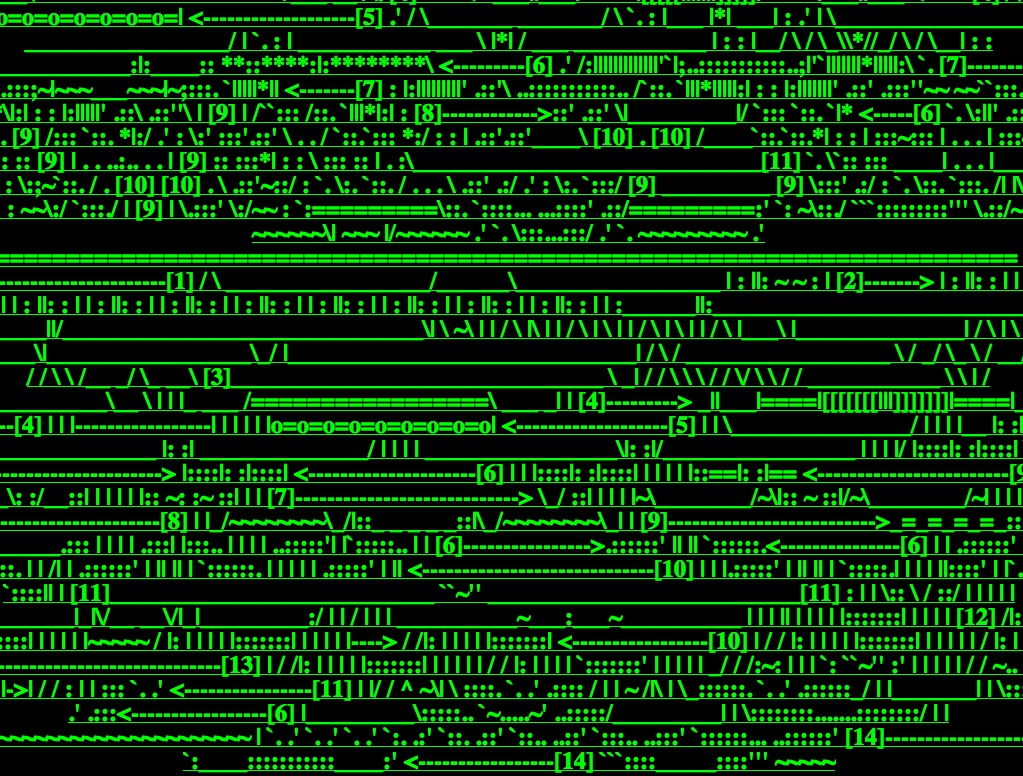
NOTE: Each time you go to Jodi.org, you will encounter a different Website. Here are a few of sites you may find interesting. Once entering, click and explore if you dare!
“We are honored to be in somebody’s computer” boast art collective Jodi.org in 1995, who early on in the age of the Web, instantly became the medium’s most celebrated and notorious artists. Their aim was to deconstruct the interface of the Web and reveal the code hidden beneath the surface. Their work essentially functioned as a viral entity that virtually embedded itself into the viewer’s own computer system, as the artists described: “We explore the computer from inside, and mirror this on the net. When a viewer looks at our work, we are inside his computer.’”
- They approach the computer and the creation of their work with a hacker intent: to probe, to disturb, to disrupt.
- The look at the Net as theatrical space, activating the space through coding. Code is for them a vehicle for transformation, for undermining the status quo.
- They were creating glitch art before it was called that. Their intent was to find the accidental disturbances of the machine and its language: to subvert the expectations, and expose its aberrations.
- Ultimately, they have revealed what lies beneath the surface of the “design” of the Web, reversing the role of code as a visual experience, rather than its functional qualities.
Jodi, or jodi.org, is a collective of two internet artists: Joan Heemskerk (born 1968 in Kaatsheuvel, the Netherlands) and Dirk Paesmans (born 1965 in Brussels, Belgium). Their background is in photography and video art; since the mid-1990s they started to create original artworks for the World Wide Web. A few years later, they also turned to software art and artistic computer game modification.
In 1999 they began the practice of modifying old video games such as Wolfenstein 3D to create art mods like SOD. Their efforts were celebrated in the 1999 Webby Awards where they took top prize in the category of “net art“. Jodi used their 5-word acceptance speech (a Webby Award tradition) to criticize the event with the words “Ugly commercial sons of bitches.” Further video game modifications soon followed for Quake, Jet Set Willy, and the latest, Max Payne 2 (2006) to create a new set of art games. Jodi’s approach to game modification is comparable in many ways to deconstructivism in architecture, because they would disassemble the game to its basic parts, and reassemble it in ways that do not make intuitive sense. One of their more well-known modifications of Quake places the player inside a closed cube with swirling black-and-white patterns on each side. The pattern is the result of a glitch in the game engine discovered by the artists, presumably, through trial and error; it is generated live as the Quake engine tries, and fails, to visualize the interior of a cube with black-and-white checked wallpaper.
Since 2002, they have been in what has been called their “Screen Grab” period, making video works by recording the computer monitor’s output while working, playing video games, or coding. Jodi’s “Screen Grab” period began with the four-screen video installation My%Desktop (2002), which premiered at the Plugin Media Lab in Basel. The piece appeared to depict mammoth Mac OS 9 computers running amok: opening windows cascaded across the screen, error messages squawked, and files replicated themselves endlessly. But this was not a computer gone haywire, but a computer user gone haywire. To make this video, Jodi simply pointed-and-clicked and dragged-and-dropped so frantically, it seemed that no human could be in control of such chaos. As graphics exploded across the screen, the viewer gradually realized that what had initially appeared to be a computer glitch was really the work of an irrational, playful, or crazed human. (This description matches Jon Cates’ Bold3RRR and provides fertile territory for live desktop performance.)
-
Mark Napier, The Shredder (1997)
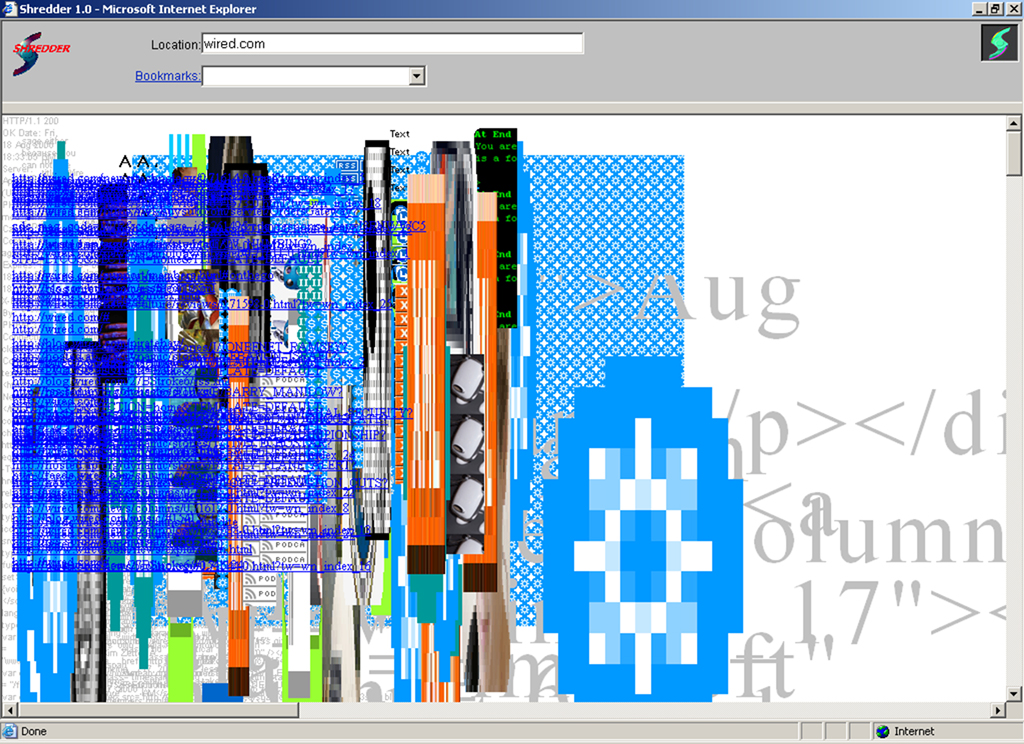
NOTE: The Shredder is no longer functional but explore the concept of how it worked as a custom browser.
Mark Napier’s The Shredder from 1997 was designed as a custom browser that enables the viewer to deconstruct or “shred” Websites. This work comes out of a long 20th century practice of appropriation and collage of mass media, with the addition of user interactivity. Napier’s software application gives the viewer the ability to appropriate and generate their own collage work. And like Jodi.org, the work investigates the hidden mechanisms of the Web, revealing the underlying code and its operations.
- This form of collage find its roots in 20th century appropriation of mass media, such as in works by Robert Rauschenberg and Nam June Paik:
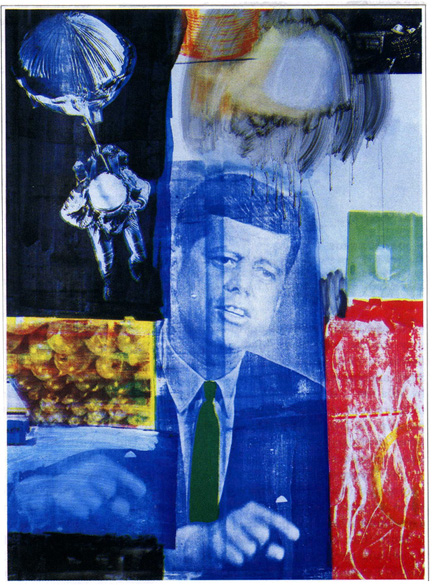
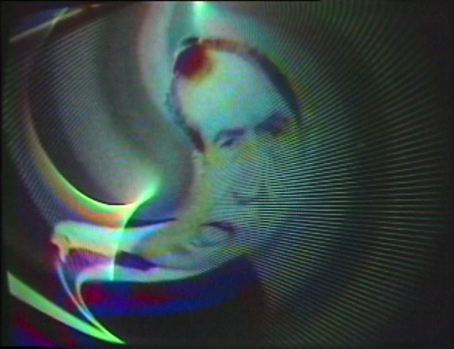
- Unlike Jodi, Mark Napier brought the viewer into an interactive relationship with subversive, hacker tactics.
- Napier changed the function of the browser into a tool for disruption. One of the first examples of what is now referred to as “software art.”
- In surprising ways, Napier demonstrates a way of viewing the underlying functionality of code as having aesthetic quality.
- The Shredder predates current glitch art because it essentially brings to the surface the accidents, errors and aberrations rather than the expected and controlled.
Mark Napier, Riot (1999)

NOTE: Riot is no longer functional but explore the concept of how it worked as a custom browser.
The Tompkins Square riots and the state sponsored enforcement of gentrification in New York’s East Village in the ’90s inspired Riot, an alternative browser that crosses the virtual boundaries in the web. Riot breaks the software-based rules of Internet domains and blends web pages together as users surf from site to site. Playboy.com blends with whitehouse.gov, CNN.com with NPR.org. Visitors surfing with Riot see their own pages merged with pages from other users. Riot was the first and only multi-user browser. Riot revealed the soft territories of the web, enforced by the rules of browser software and domain name servers.
Riot is an alternative Web browser that builds its page by combining text, images and links from the recent pages that any Riot user has surfed to more…
From the page instructions: Use RIOT as you would use any other browser:
- surf by entering a URL into the location bar
- choose a recent page from the history list
- choose from the Bookmarks.
Mark Napier is an early adopter of the web and developed my first web-based applications for financial data in 1996 while working for a market data startup called LPC. For much of my career I’ve worked in a designer/architect role – information architect and user experience – but my background in programming (Java/SQL, Javascript, C++, C) gives me insight into the inner workings of software systems. After LPC was sold to Reuters in the late ’90s I made a name for myself as a new-media artist and am considered to be a pioneer of digital art on the Internet. More recently, after several years in the big corporation experience at Thomson Reuters, I am back in startups, consulting for a new personal finance company.
-
Rosa Menkman, Collapse of PAL (2012)
Note: Rosa Menkman is this week’s visiting artist. We will discuss her work with the artist present via Adobe Connect.
NOTE: Phase Alternating Line (PAL) is a colour encoding system for analogue television used in broadcast television systems in most countries broadcasting at 625-line / 50 field (25 frame) per second (576i). Other common colour encoding systems are NTSC and SECAM.
The Collapse of PAL is a transmission art project that explores the performativity of television in light of the challenges brought about by a converging mediascape. Signal, noise, liveness and flow along with standardized production formats are all aspects of the television medium which are reshaped in digital, networked media. Rather than a stream-lined sound-image of digital convergence, SOUND & TELEVISION strives to act as a springboard for an aesthetic “media-clash” reflecting on the political-aesthetic of old and new media forms. SOUND & TELEVISION invited me to work with the materiality of audiovisual flows to realize a performance exploring the performativity of television. In this performance, the transmission itself became the artwork. The performance reflects on different significant aspects of the changing conditions of broadcasting.
In the new DVB-T (digital terrestrial television) environment, the very transmission format of TV has changed, from symmetric analog to asymmetric data flows, encoded in the MPEG format and decoded through software implemented in everything from flat-screen TV’s, set-top-boxes and PC’s. “The cracking of LCD screens” …all is not smooth in this world of digitally compressed TV. In “The Collapse of PAL” (Eulogy, Obsequies and Requiem for the planes of blue phosphor), the Angel of History (as described by Walter Benjamin) reflects on the PAL signal and its termination.
This death sentence, although executed in silence, was a brutally violent act that left PAL disregarded and obsolete. However, the Angel of History has to conclude that while the PAL signal might be argued death, it still exists as a trace left upon the new, “better” digital technologies. PAL can, even though the technology is terminated, be found here, as a historical form that newer technologies build upon, inherit or have appropriated from. Besides this, the Angel also realizes that the new DVB signal that has been chosen over PAL, is different but at the same time also inherently flawed.
The Collapse of PAL was first developed as a commission for SOUND & TELEVISION (Copenhagen, Dnk). “A transmission art project that explored the performativity of television in the light of the challenges brought about by the converging mediascape.” The video footage is based on the analogue PAL video signal, compressions, glitches and feedback artifacts that are complimented by (obsolete) soundscapes that originate from both analogue and digital media. For the video I exploited the analog PAL signal from a NES, image bending, a broken digital photo camera, teletekst, digital compression artifacts, video bending artifacts (DV, interlacing, datamoshing and black bursts) and feedback. For the sound I used a cracklebox, feedback, a telephone eurosignal, morsecode an old Casio keyboard, feedback filters and a couple of DV-compressed video soundbends. //////////////////////////////////////////////////


